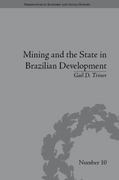Question
In a study of housing demand, the county assessor develops the following regression model to estimate the market value (i.e., selling price) of residential property
In a study of housing demand, the county assessor develops the following regression model to estimate the market value (i.e., selling price) of residential property within his jurisdiction. The assessor suspects that important variables affecting selling price (YY, measured in thousands of dollars) are the size of a house (X1X1, measured in hundreds of square feet), the total number of rooms (X2X2), age (X3X3), and whether or not the house has an attached garage (X4X4, No=0,Yes=1No=0,Yes=1).Y=+1X1+2X2+3X3+4X4+Y=+1X1+2X2+3X3+4X4+Now suppose that the estimate of the model produces following results: a=166.048a=166.048, b1=3.459b1=3.459, b2=8.015b2=8.015, b3=0.319b3=0.319, b4=1.186b4=1.186, sb1=1.079sb1=1.079, sb2=5.288sb2=5.288, sb3=0.789sb3=0.789, sb4=12.252sb4=12.252, R2=0.838R2=0.838, F-statistic=12.919F-statistic=12.919, and se=13.702se=13.702. Note that the sample consists of 15 randomly selected observations.
What proportion of the total variation in sales is explained by the regression equation?
0.789
0.129
0.838
The given F-value shows that the assessor reject the null hypothesis that neither of the independent variables explains a significant (at the 0.05 level) proportion of the variation in income.
Which of the following is an approximate 95 percent prediction interval for the selling price of a 15-year-old house having 18 hundred sq. ft., 4 rooms, and an attached garage?
(178.949, 206.353)
(165.247, 220.055)
(229.367, 284.175)
Step by Step Solution
There are 3 Steps involved in it
Step: 1

Get Instant Access to Expert-Tailored Solutions
See step-by-step solutions with expert insights and AI powered tools for academic success
Step: 2

Step: 3

Ace Your Homework with AI
Get the answers you need in no time with our AI-driven, step-by-step assistance
Get Started


